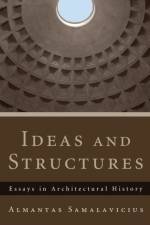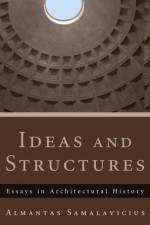von Almantas Samalavicius
24,00 €
Description:This book is a scholarly inquiry into several dimensions of culture, exploring the close relationship between architecture and metaphysical ideas as well as religious and philosophical concepts in each period of human history, a relationship which has, however, been largely forgotten or neglected by modernity. Rather than being a specialized account of any particular epoch, it is an intellectual attempt to map out a general picture of how certain ideas have made their way into architectural structures or shaped them in one or another way, from classical Antiquity through the Middle Ages and the Renaissance to the present. The four essays it contains, focusing on light, water, color, and sound in architecture, are written by an author who is a historian and critic of architecture as well as literary scholar, who firmly believes in the value of discussing these issues from the perspective of the history of ideas. The author is conscious about the limits of any generalizations, but he believes that architecture should be studied not only as an art in its own right, but as something larger, enveloping many layers of culture and reflecting the bonds between human thinking and the practice of the art of building.Endorsements:""The new book of professor Almantas Samalavicius is an extraordinary instrument of formation for young architects. Most of the literature on architecture is full of continuous references to subjects like light, color, sound, or water. Each of these words becomes true myths for architects, but unfortunately, they not always have a solid philosophical formation or lack sufficient cultured references to speak about these matters properly. Here Samalavicius offers a complete repertoire of references that I consider essential for the education of the architecture students. For this reason, welcome Ideas and Structures!""--Jaime NavarroUniversity of Seville, Spain.""Almantas Samalavicius promises 'a scholarly inquiry' but delivers a grand tour. These concise and accessible essays, immersed in the history of ideas, feed the senses--sight, sound, touch--and attend to the material that most fully defines our water planet. They survey mysticism, music, and theories of color and take seriously 'the powers of the soul to comprehend the incomprehensible.' More than a collection of essays in architecture, this is a contribution to politics in the classical Aristotelian sense, full of insight into the cities we make, the cities that make us, and the possibilities they contain.""--Steven Schroeder Co-founder of the Virtual Artists CollectiveAbout the Contributor(s):Almantas Samalavicius is a professor at Vilnius Gediminas Technical University's School of Architecture and teaches at Vilnius University, Department of English. An author of eight books published in Lithuanian, he has been a visiting scholar at the University of Illinois at Chicago, Kyungpook National University of Korea, and several European universities.


